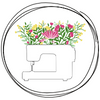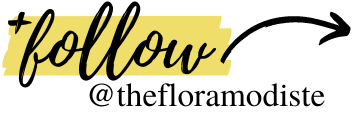How To Organize My Sewing Space: DIY Pattern Cards

I LOVE organizing and having a clean space. Because I work from home, having an organized sewing space is an absolute must. Therefore, being organized is literally non negotiable. And part of learning how to organize my sewing space is by keeping my patterns in check.. Which is where pattern cards come in.
Not sure what a pattern card is? Or why you need it? Don't fret, little dove. Because this post is going to delve in to some serious detail on why you need pattern cards if you, like me, are intent on keeping your sewing space organized.
But first of all. What IS a pattern card?
A pattern card essentially acts like a label for your sewing patterns.. Almost like a nutrition list on a box of cereal. It's almost like how the nutrition list on your box of Joe's O's tells you exactly what ingredients make up the cereal that goes in to your belly..
Similarly, a pattern card tells you exactly what you can expect from the sewing pattern inside the manila envelope that it is taped to. Can you imagine just throwing all of the pattern pieces for a particular project in to an unlabeled envelope? And doing that over and over and over again?

But no! I am always looking for ways to organize my sewing space, and labeling patterns with a pattern card is such an easy way to help with that.
(Want to use the same exact pattern card template that I use to organize my sewing space? Get yours below!)

How to organize my sewing space: When to use a DIY pattern card?
First of all, pattern cards are pretty easy to create. They just need about an hour of your time to complete. I create my pattern cards using Illustrator, but I know that there are any number of ways in which a pattern card can be made. (Think: Google Docs, Excel, etc. etc.)
In addition to filling my pattern card out, I also tape it to a manila envelope. Inside said manila envelope I put ALL of the pattern pieces for a particular project. (And if the sample can fit, I will even throw that in there!)
I have boxes and boxes of manila envelopes that contain my sewing patterns. I literally can't even imagine what my sewing space would look like if I didn't have my patterns all organized this way. It would certainly be a disaster.
And it just takes an hour of your time after finishing up a project to create the pattern card, print it out, and stick it to the manila envelope that contains your sewing pattern.
And YES. Please, please create your pattern cards right after finishing up with a project. Because if you don't do it right after finishing up with a project, there's probably a pretty great chance that you'll just move on to the next project.

With the excitement of working on a new project, you will forget all about the old one.. Forever putting off creating that pattern card for a project that you were working on 3 months ago. 6 Months ago. A year ago.
I have been working on how to perfect and organize my sewing space for YEARS. And creating pattern cards for all of my different sewing projects is certainly an absolute must.
Just do it. You will be so thankful that you did, I promise.
(Want to use the same exact pattern card template that I use to organize my sewing space? Get yours below!)

How to organize my sewing space: What makes a DIY pattern card?
So. Now I've hopefully convinced you on how important it is to create pattern cards for all of your different sewing projects. But WHAT actually makes up a pattern card? I'm so glad you asked.
The most important sections of a pattern card include the following:
- Project Details: This includes style name, number, and sizing details.
- Pattern Pieces: This is where all of the different pattern pieces are listed out. And yes: Every. single. pattern. piece.
- Technical Illustrations: This is where the technical drawings for the design can be found. (Both front and back!)
- Construction Details: This is where construction detail measurements come in. (Think: Armhole seam allowance, neckline seam allowance, etc. etc.)
- Trim Descriptions: Finally, this is where all of the trims needed for the project are listed out.
Not too bad, right? Let's break down each of the different categories, so that you know exactly WHY each section is necessary when creating and filling out your very own pattern cards.
(Want to use the same exact pattern card template that I use to organize my sewing space? Get yours below!)
How to organize my sewing space: DIY pattern cards (project details)
Project details are ESSENTIAL when creating pattern cards that will be sent to professionals. If there are no project details included on a pattern card, so much could go wrong.
For example: If the size range isn't listed in the details, how will the grader know what sizes to grade? Or if there isn't a sample size listed, what if they assume it's a Small, but it's not?

Listed below is all of the information that I include in the project details section of my pattern cards:
- Date: The date that THIS version of the pattern was created. Sometimes there are revised patterns, which should have their own separate envelope and pattern card.
- Pattern/Style #: Factories LIVE off of style numbers, not style names. They are absolutely essential, so don't forget to include one.
- Style Name: While factories may go off of style numbers, I feel like most companies go off of style names internally.
- Season: Helpful information to have, just for documenting the style's history.
- Company Name: Often helpful for factories, since they are often working with so many companies at one time.
- Pattern Maker: Important to have. In case there is an issue with the pattern, you will know who to contact.
- Size Range: Essential information for graders.
- Sample Size: The size that the pattern is based off of. Grading is then done based off of that size. Again, essential information.
- Contact Information: Provide a name, email, and phone number. If anyone has a question, it's essential that they are able to get in touch with someone quickly.
"I wish I wouldn't have let the factories know everything they needed to.." said no one ever.
(Want to use the same exact pattern card template that I use to organizeg my sewing space? Get yours below!)
How to organize my sewing space: DIY pattern cards (pattern pieces)
Next up on a pattern card is making sure that all of the pattern pieces in the manila envelope are listed out. And yes, that includes every. single. pattern piece.
Why do they ALL need to be listed out, you may ask? Well. What if somehow, somewhere, a piece goes missing? And then you pay ALL that money to have your pattern graded and marked..

More often than not, the company is going to charge you the same price for grading all of the pieces, or grading one that was left out. But if they KNOW a piece is missing beforehand, then they can wait until you send over the missing piece.. And finally save you some money.
Furthermore, listing out all of the pattern piece is essentially like a manifest for a package. It tells you exactly what to expect, and if what's inside differs from the manifest, then there's something wrong. It's also helpful to color code your pattern pieces:
- BLACK text represents self pattern pieces.
- BLUE text represents contrasting self pattern pieces. (i.e. If there are two different self fabrics.)
- GREEN text represents lining pattern pieces.
- RED text represents interfacing pattern pieces.
I feel like those colors are pretty much a rule of thumb when it comes to the industry, so make sure to keep them in mind when making your own pattern cards.
(Want to use the same exact pattern card template that I use to organize my sewing space? Get yours below!)
How to organize my sewing space: DIY pattern cards (technical illustrations)
Oh, technical illustrations. It's a love/hate relationship. Technical drawings are absolutely ESSENTIAL when it comes to pattern drafting.
The drawings show exactly what to expect from the design.. All the way from style lines to topstitching. Photos can also be used in place of technical drawings, but more often than not, a physical garment hasn't been created yet.
So a technical drawing is pretty much always a must have. Ensuring that the drawing matches exactly what you want created is essential. Therefore always make sure to include both a front and back drawing, since more often than not the front and back designs are always different.
I create all of my technical illustrations using Illustrator, but they can also be done by hand if you don't have Illustrator.
How to organize my sewing space: DIY pattern cards (construction details)
Construction details are also a must have when it comes to pattern cards. This is pretty much where all of the measurements for the design are listed out, as needed.
More often than not, the seam allowance for a neckline is different than the seam allowance for a side seam. And those measurements have to be called out somewhere, otherwise the seamstress will have no idea, and the fit will certainly be off.
As a result, the different construction details that I list out include: (But are not limited to)
- General Seam Allowance
- Bottom Hem
- Closure Seam Allowance
- Pocket Finish
- Waistband Seam Allowance
- Inseam Measurement
- Neck Seam Allowance
- Armhole Seam Allowance
If a particular construction detail isn't needed for a design, I simply fill in the space with N/A. That simply alerts the seamstress that that particular detail isn't necessary for this project. Always good to be thorough, rather than just leaving a blank space.
(Want to use the same exact pattern card template that I use to organize my sewing space? Get yours below!)
How to organize my sewing space: DIY pattern cards (trim descriptions)
And finally, we come to the section for trim descriptions. Trims for a sewing project can include zippers, buttons, snaps, patches, etc. etc. Basically anything that isn't fabric can be considered a trim.
Consequently, it is essential to call out all trims for a project, otherwise they may not be included when sewing it up. I have seen trims not called out before, and as a result the bag of buttons just sits on the factory floor, never to be used.

As a result, the information that I include when filling out the trims section includes:
- A short trims description. (Think: Invisible zipper, thick black buttons, small pearl buttons, etc. etc.)
- Quantity of the trims needed. (i.e. 1 Zipper, 7 buttons, etc.)
- Size of the trims. (i.e. 14" Zipper, 24L buttons, etc.)
And that's pretty much it! Not too bad, right?

"I wish I wasn't so organized and thorough.." said no one ever.
While keeping your sewing patterns organized is pretty easy, it does take some effort. Whether you're trying to organize a business or just your own little sewing space at home, knowing how to create a pattern card is essential.
It's an easy task that can certainly make a BIG difference when it comes to getting organized.
(Want to use the same exact pattern card template that I use to organize my sewing space? Get yours below!)











